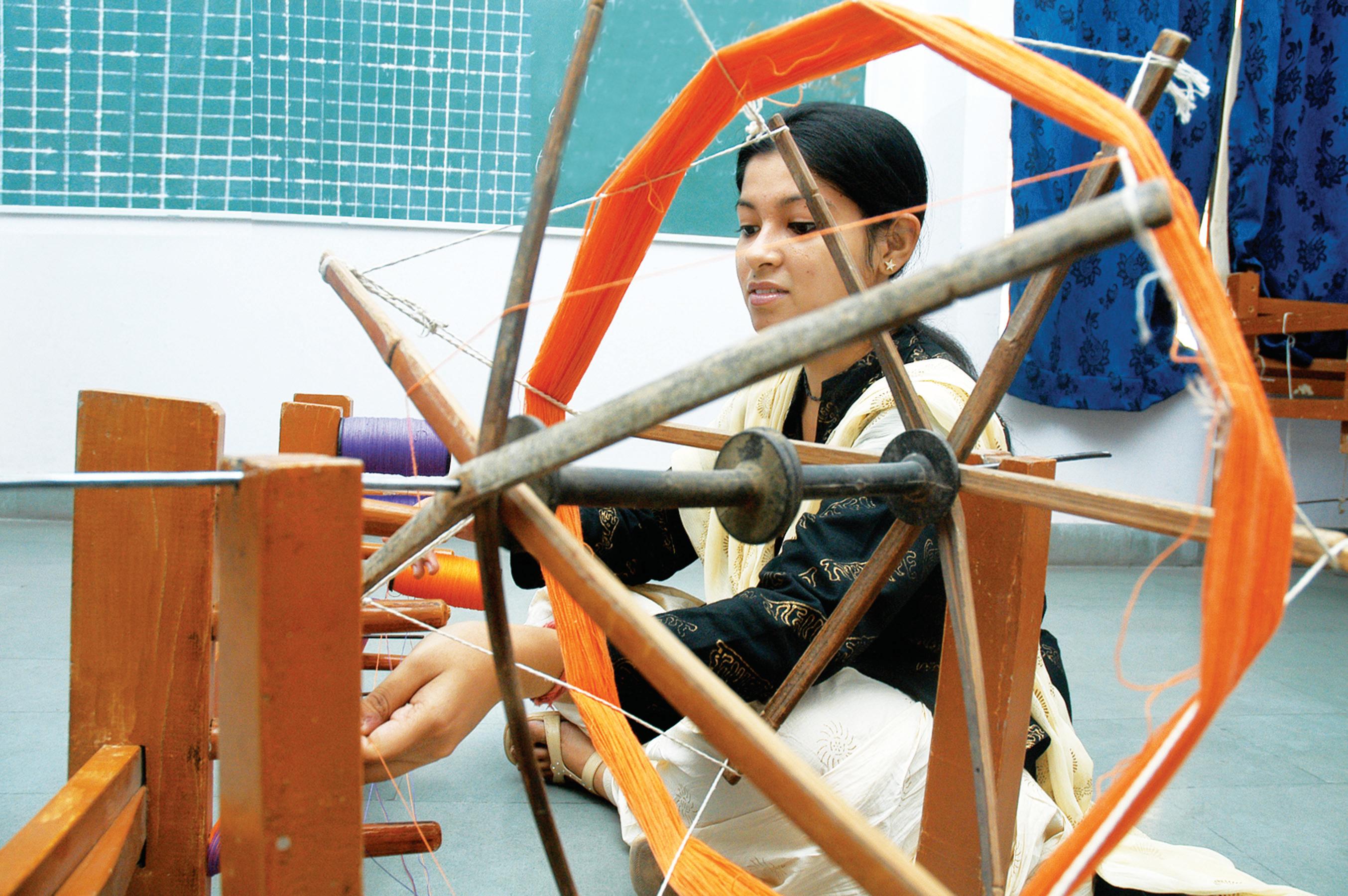
3 minute read
Simple charms of Gandhi’s khadi
from 2009-10 Sydney (1)
by Indian Link

Khadi is experiencing a revolutionary revival, discovers SHWETA SIROHI GUPTA, as she traces its journey into contemporary couture
Many decades ago in India, a skeletal, bare-chested man sat behind a spinning wheel and spun khadi, a fabric that not just nurtured a revolution, but zealously popularised the cloth and its use during the freedom struggle. Post Independence, the country’s freedom fabric witnessed a diffused phase where khadi was sold only in deficiently run, shabby, dim government stores. It was also tagged as ‘uncool’ as young Indians appreciated lycra and polyester fabrics, whereas khadi became something only worn by politicians, hence boring. As Indian politics started shaking hands with indignity and sleaze, there was also a phase where khadi was looked down as the cloth of corruption, leave alone setting the fashion bazaar ablaze.
However, things started to change around a decade ago, and for the better, when a handful of fashion designers, resolute buzzcreators and socialites thought ‘off-beat’, and determined it was time to reinvent the spinning wheel and revive the thrill of humble khadi. It was time for khadi Khadi inspired fashion shows were held in five-star hotels, khadi boutiques were opened, and India’s top designers were called in to make it hip. As the popularity of organic fabrics grew, khadi came into the limelight once again. Nowadays khadi is considered chic, thanks to its environment friendly properties and handcrafted texture. Youngsters love it because it is a no fuss, wearable fabric, and very easy to maintain. It falls well and becomes second skin after two washes. It breathes, it has a self-texture. And being a breathable and comfortable fabric, khadi has several distinct characteristics. It has a very rustic feel infused with a modern sensibility and one can play with it in different concepts. Every process of its formation is handcrafted and hand-spun, and this human touch at every stage of its weaving makes it exclusive and high-end. It gives more breathing space to the body and has a unique thermal effect, which lends greater warmth in winter and cooling in summer. What more can you ask for?
The beautiful textured fabric has been accepted not only nationwide but worldwide by international designers as well. Leading
Cakes for All Occasions
To place an order contact Mahalaxmi on 0431712196 designers like Rohit Bal, Jatin Kochchar, Malini Ramani, Bhavna Thareja and upmarket clothes brands like Fabindia and Anokhi have given an elite consciousness to the fabric. Rohit Bal sells his khadi line in his store ‘Balance’ in New Delhi. Designer duo Parvesh and Jai recently showcased their collection inspired by the theme Diana meets Gandhi, where the duo presented how a Princess gets fascinated by the Gandhian way of non-violence, simple living and high thinking and in her journey, she transforms her dressing from free-flowing chiffons and georgettes to organic cotton. The same collection also showcased in Paris, Milan and Rio. “We imagined how Diana met Gandhi and was inspired by things that he epitomized, especially khadi weaving,” says the duo. Popular designer Sabyasachi Mukherjee is the latest designer to join the khadi bandwagon. Mukherjee is well aware that celebrating the timeless appeal of India’s national cloth means getting the message across to India’s biggest media outlet - Bollywood. He has dressed Aishwarya Rai in homespun for two films currently in production, Ravana and Guzaarish, and Vidya Balan in Paa which is due to be released soon.
Mumbai-based designer Sangita Sinh Kathiwada has worked with khadi for over a decade to make it India’s ‘cool and contemporary fashion statement’. She holds khadi workshops every summer, where aspiring fashion students learn how to spin and weave by hand. When she sells her khadi line to Bombay’s rich and famous, she tells them that they will not only look like a dream, but also support a weaver in the village. Young designers Ashish Parikh, Amrish Kumar, Nisha Jamvwal, Nida Mahmood, Vijay Lakshmi Dogra are all inspired by the fascinating fabric and more then excited to base their creations upon khadi. They have implicated surface ornamentation, layering and embroidery with khadi, turning it into a chic and beautifully cut ready-to-wear garment. Designers and fashion watchers in India also insist that the best khadi can compete with the famed Egyptian cotton. Apart from being the king of the wardrobe, khadi has also become a lifestyle product. It is used to make durries, gaddas, upholstery, cushions, bags, mats, bedsheets, and curtains. Its inherent toughness ensures that it doesn’t wear down easily.

Khadi’s journey from its eventful birth as the fabric favoured by revolutionaries, to designer boutiques and elite consciousness has been an exciting one. While designers sing praises to the versatility of the fabric, wearers swear by its practicality and comfort. Khadi is a big job creator for weavers in Indian villages, as it is labourintensive work. It is both an emotional and economic cause for India. With more than hundred million meters of khadi cotton, silk and wool cloth produced every year, khadi continues to be the glam garb. Khadi is the way we keep Gandhi’s dream alive.















